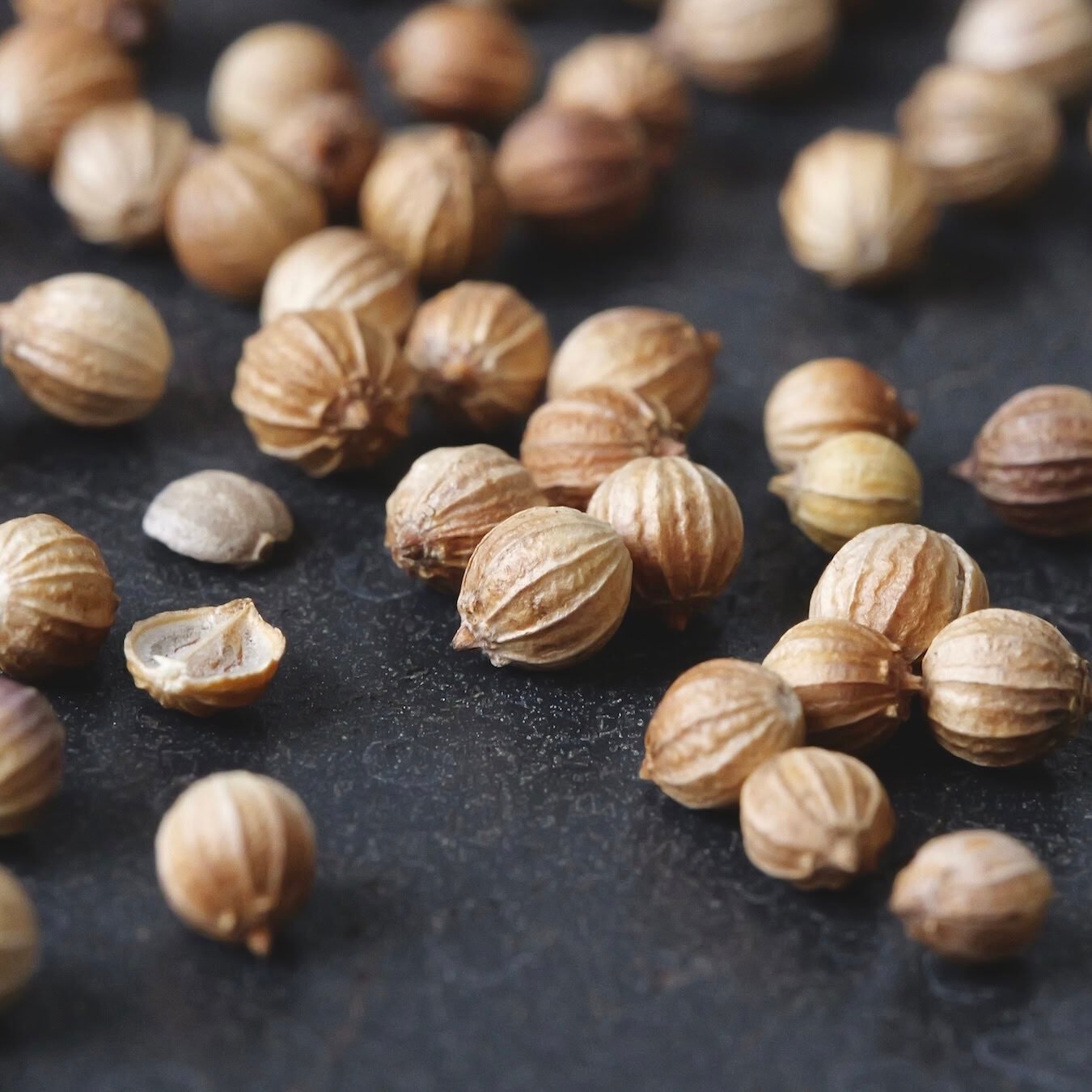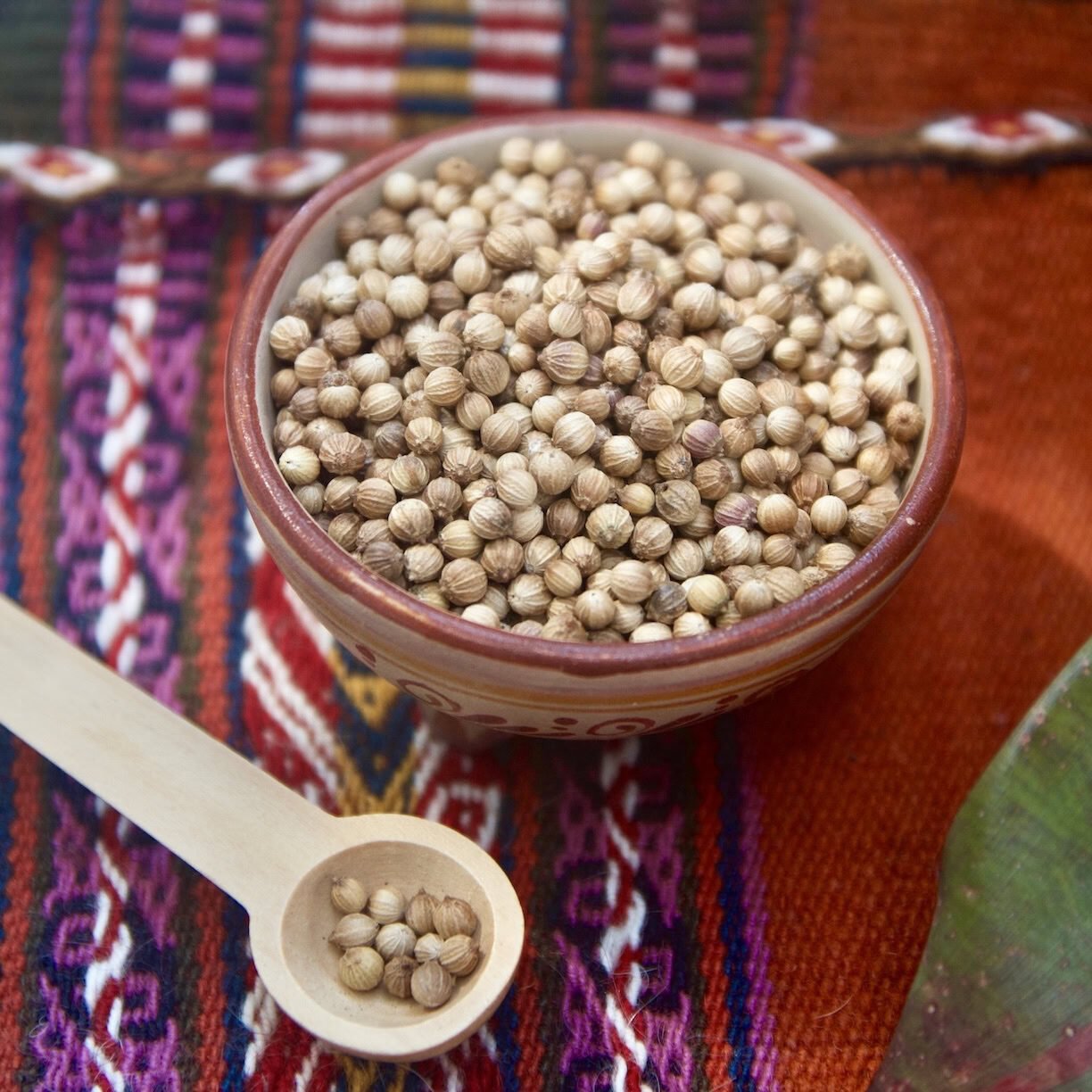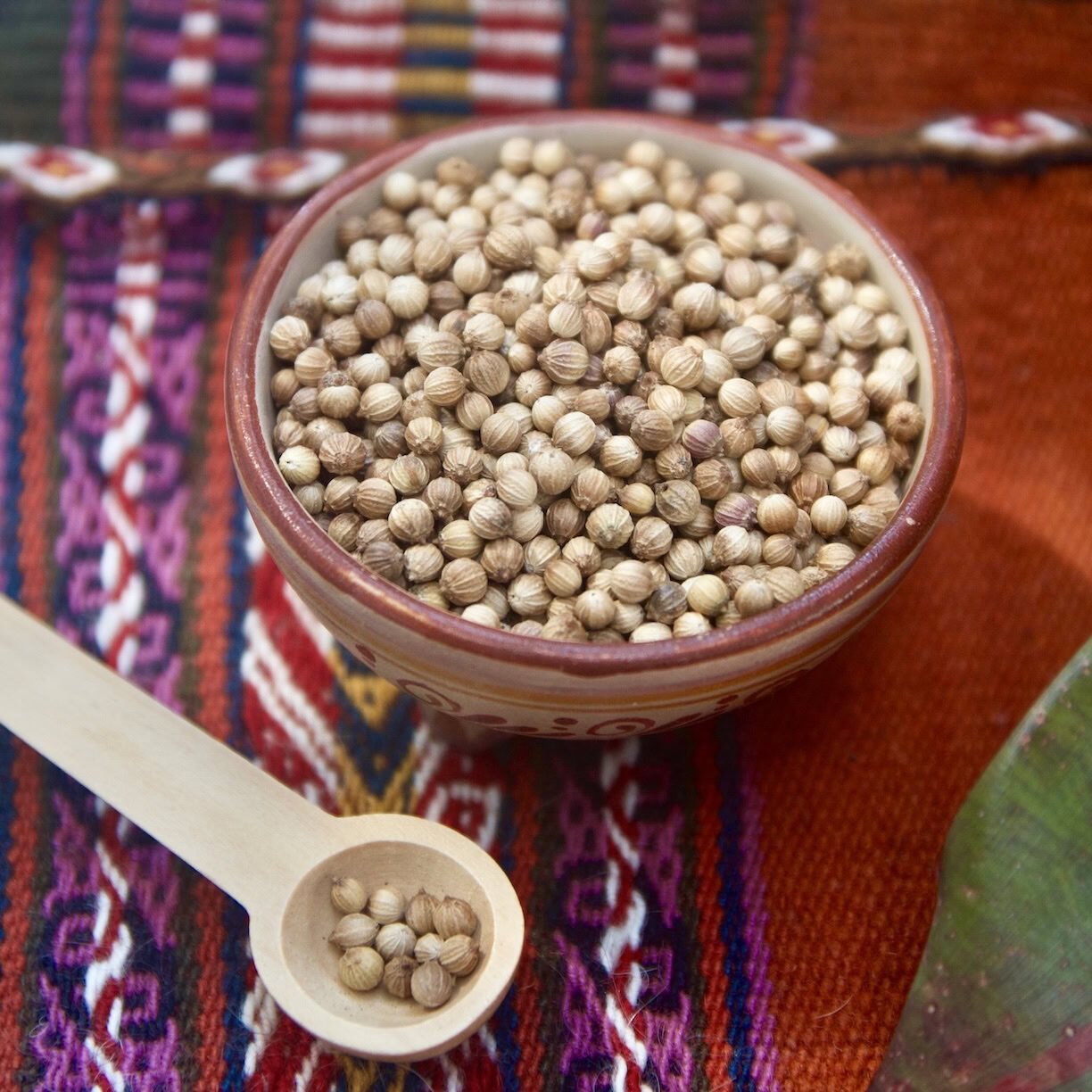Coriander
Coriander is the spice produced from the tiny fruit (often called "seeds") of Coriandrum sativum, an annual herb in the parsley family. The plant also provides the culinary herb cilantro from its leaves.

REGION OF ORIGIN
Coriandrum sativum originated in the Eastern Mediterranean, spanning parts of Southern Europe, North Africa, and the Middle East. Coriander use dates back to ~5000 BCE—it was discovered in archaeological sites in Greece, Israel, and Egypt.
PART & COLOR
Like the other “seed” spices in the parsley family (anise, caraway, cumin, dill, and fennel seed), coriander “seeds” are actually tiny, round fruit called schizocarps. They are green on the plant, but turn brown when ripe and a lighter tan to yellowish beige color when fully dried. The feathery green leaves are also used in cooking ("cilantro" or "coriander leaf").
HARVEST
Coriandrum sativum is an annual herb that thrives in temperate climates and is typically planted in the spring. The plant is allowed to flower, producing small, white and pale pink blossoms that develop into little green fruits. They are ready for harvest in late summer or early autumn once they turn brown but before they split open when fully ripe. The entire plant is cut, dried, and threshed to isolate the fruits.

FLAVOR & AROMA PROFILE
Unlike most spices, which tend to have primarily warm, earthy qualities, the little dried fruits of the coriander plant are predominantly bright. They have a very clear, citrusy sweetness and floral appeal that is relatively rare among spices. It is an herbal, fruity spice. On the palate, the flavor starts with a mild sweetness and transitions into a slightly tangy, invigorating burst of lemon, sage, and pepper.
When toasted, these characteristics intensify, releasing nutty, toasty notes while retaining the refreshing hints of orange zest. This unique combination makes coriander a compelling addition to any cook’s spice rack. Its ability to balance and enhance other ingredients with its brightness, while not needing to be fresh, makes coriander irreplaceable.
CULINARY USES
Coriander seeds are a staple in various cuisines and spice blends. They are a key ingredient in Indian cuisine, used in mixes like garam masala and curry powders, which in turn flavor curries and lentil dishes. In Middle Eastern cuisine, they are often simply combined with cumin to flavor stews and roasted vegetables. They is also used in the popular blends baharat and Ras el Hanout, adding unique dimensions to tagines and grilled meats. In Western and Asian cooking, they are used in pickling spices, marinades, and rubs for meats.
There are so many reasons to leverage this singular spice's bright, citrusy element. Whenever a squeeze of lemon or lime suits a recipe, consider also grinding in some whole coriander seed, or even in its stead. See what it does to the dish.



